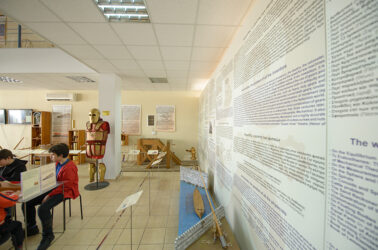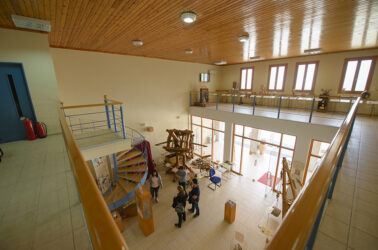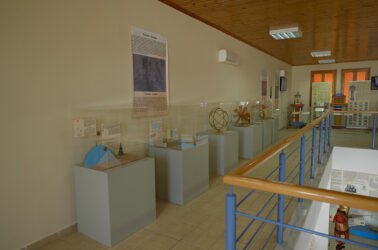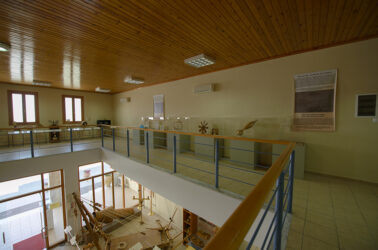Archimedes’ Museum is permanently hosted in the center of the city of Ancient Olympia in a two floor building that was granted by the municipality of the city of Ancient Olympia. That was unanimously agreed by the board of directors of the city of the Ancient Olympia and supported by both the trade association and the Hotel owners of the city.
Archimedes’ Museum (www.kotsanas.com) is a unique thematic museum in Greece and is dedicated to the great Mathematician, Physicist, Engineer, Astronomer and Inventor of the ancient Greece and the Ancient Greek Technology of his time. Archimedes was a unique and tiptop genius in the spiritual world of all times. He passed on to the global culture great theses in the fields of all the ancient sciences and most of all, he became the springboard for the development of the modern science, while at the same time he invented a lot of inventions.
Some of them, are still in use. It is known that inventor Archimedes inspired Da Vinci and multi-field scientist Archimedes influenced Galileo and Newton. For example, in the field of mathematics, he invented the infinitesimals and the method of exhaustion, which are the modern Differential and Integral calculus, a numbering system for measuring very large sizes which was similar to modern exponential - logarithmic system and (without taking into account the recent retrievals from the famous “palimpsest”) he had a “modern” perception of combinatorics and actual infinity that made Leibniz say: “He who understands Archimedes … will admire less the achievements of the foremost men of later times”.
Similarly, in the field of mechanics, the evolved hydraulic screw, the accurate mechanical planetarium, the winch with gears and endless screw, the dioptra, the odometer, the nautical odometer, the mechanical and the hydraulic paradox, the way to check the purity of gold, the density meter, burning using mirrors, the Roman scale, the giant cranes and the powerful war machines are some of his 24 inventions that are exhibited on the ground floor of the Museum.
In the center of the hall, is located the famous Antikythera mechanism, which recent researches shows indirect fatherhood of the Syracusian man. Also, 24 exceptional inventions from the time of Arhimedes such us the “cinema” and the “robot – servant” of Philon, the most accurate automatic clock, the “hydraulis”, the twin suction force piston pump of Ktesibios, the repeating catapult of Dionysios and more, are exhibited on the first floor of the museum.
The aim of Archimedes’ museum is to feature in absolute validity and reliability, this unknown perspective of that great wise man of antiquity and to prove that that the technology of the Ancient Greeks during the 3rd century B.C. was shockingly similar to the beginning of our modern technology.
For example, the bolts and nuts, gears and rules, pulleys and belts, sprockets and roller chains, hydraulic controllers and valves, programmers and auto-pilots (which are also parts of the motor of a conteporary car), are just some of the inventions of the ancient Greeks which were the foundations of their complex technology. These legacies, identical and irreplaceable, continue today to constitute the building blocks of our modern technology, the development of which would be doubtful without its effortless and undemanding adoption.
Only after a millennium of maturation was humanity able to "recover" this remarkable forgotten technology. The exploration of this age, when ownership for peak technology was not claimed, demonstrates, without a doubt, how much more (than we think) the modern Western Technological Civilization owes to the Greeks.
The exhibits are accompanied by rich audio-visual material (in Greek and English), such as explanatory labels and giant posters with a lot of information, detailed diagrams, photos and complete bibliographical references, while many of the exhibits are interactive. There are projecting stations with video and animation as well as documentaries in which the exhibitor explains the function and the use of the mechanisms.
The exhibition (in thematic sections) follows the modern educational perception in Pedagogic and Museum Education so that it acts multileveled, as far as the greatness of ancient Greek technological thought and technique is concerned, in all levels of the educational community and the wider public.












